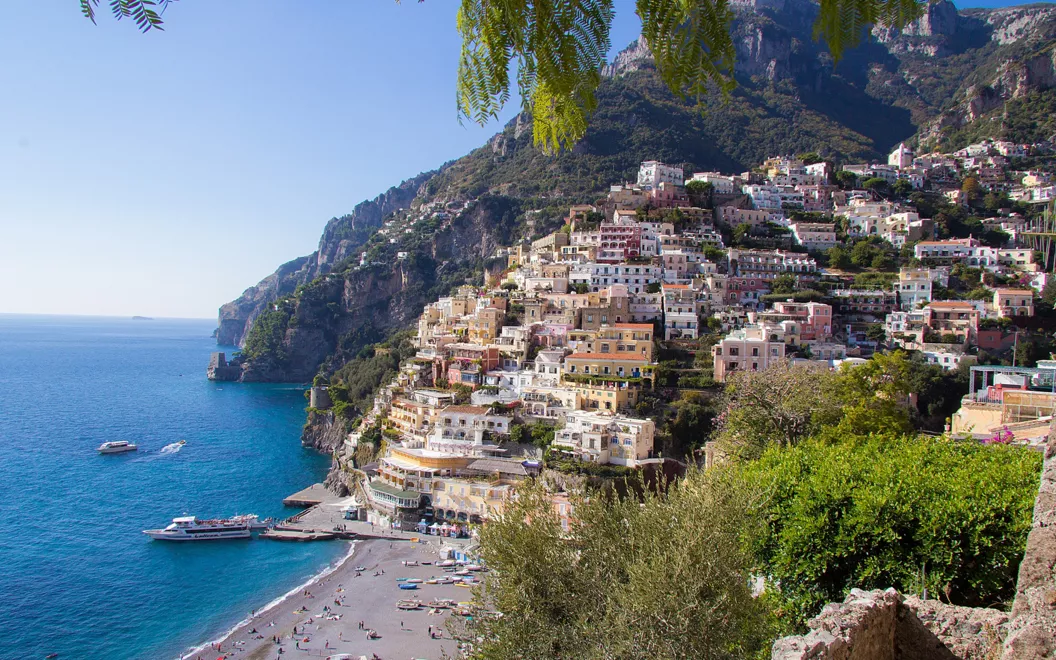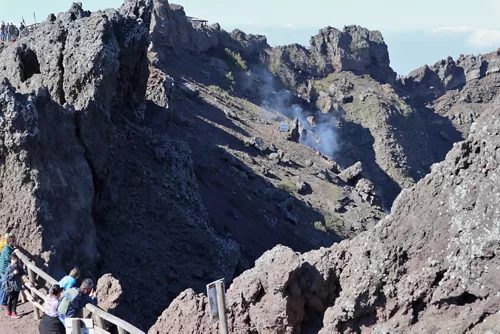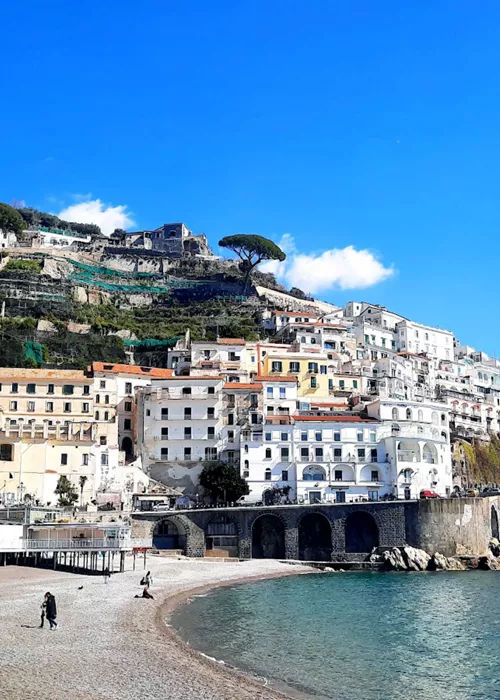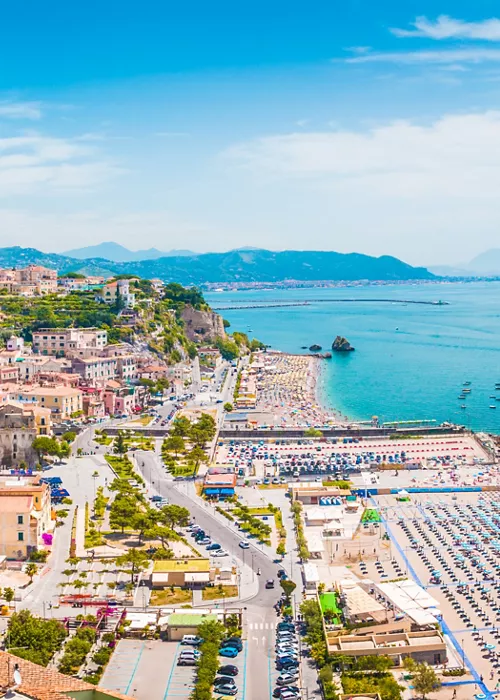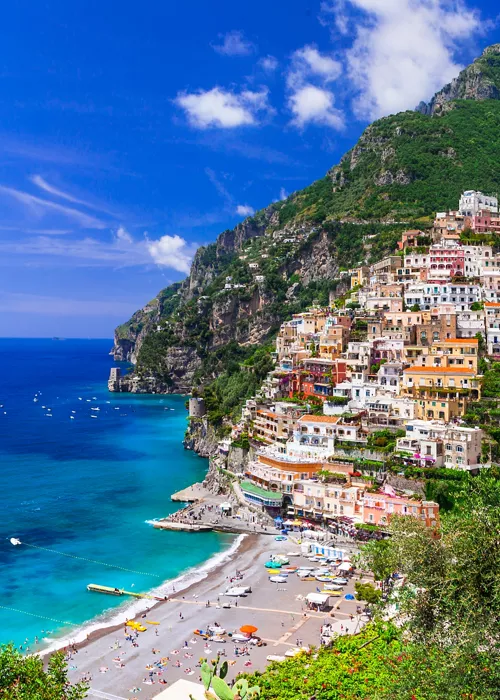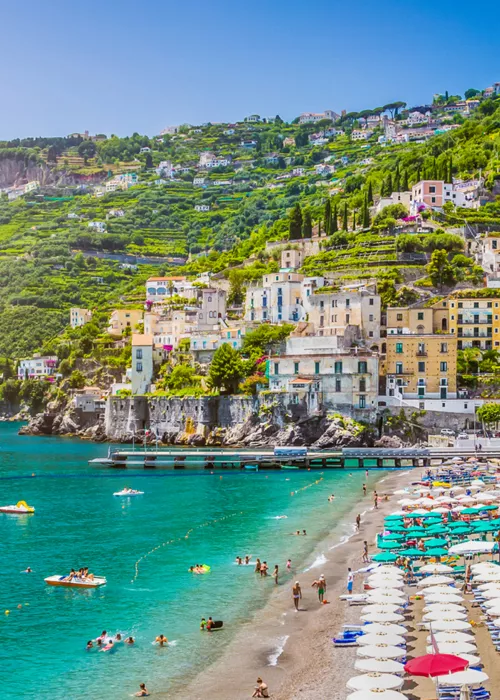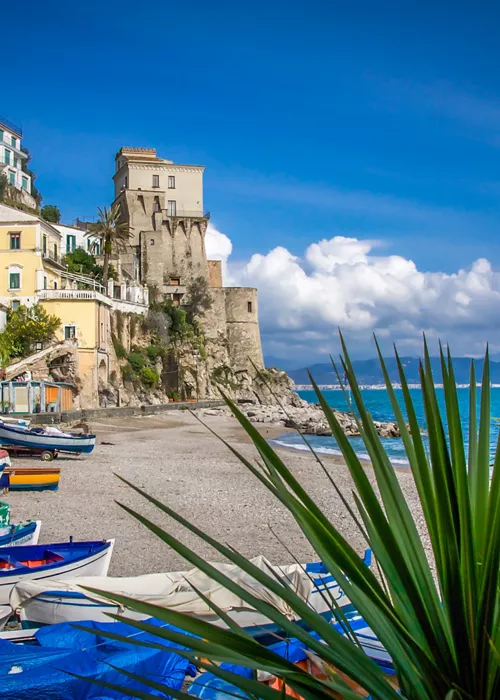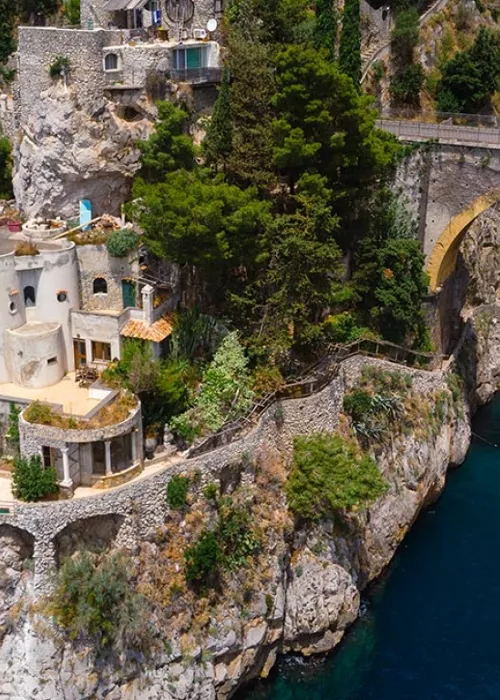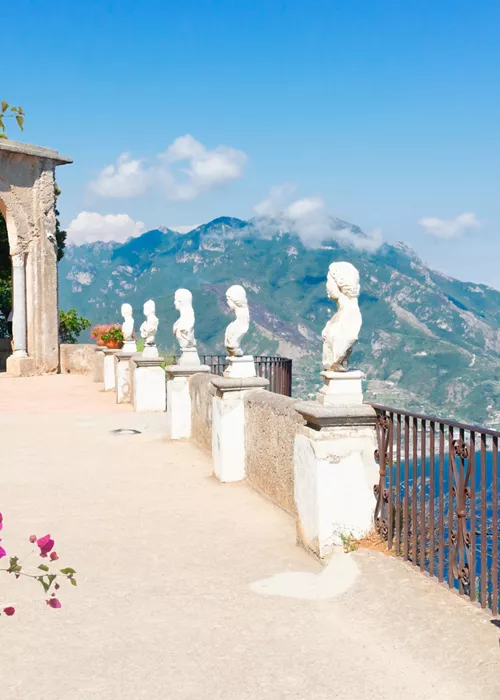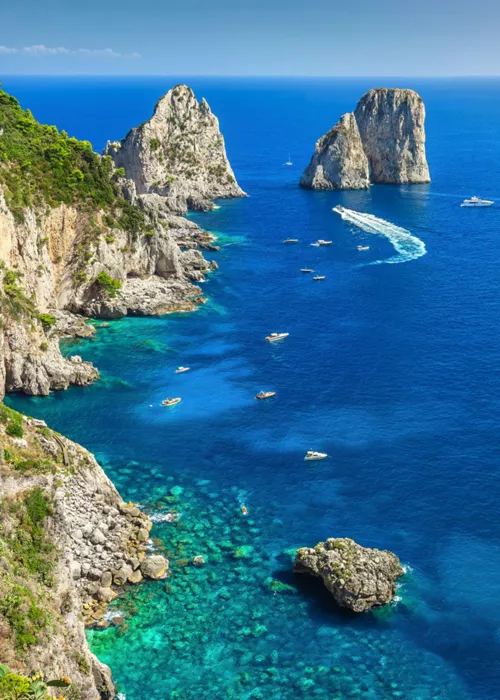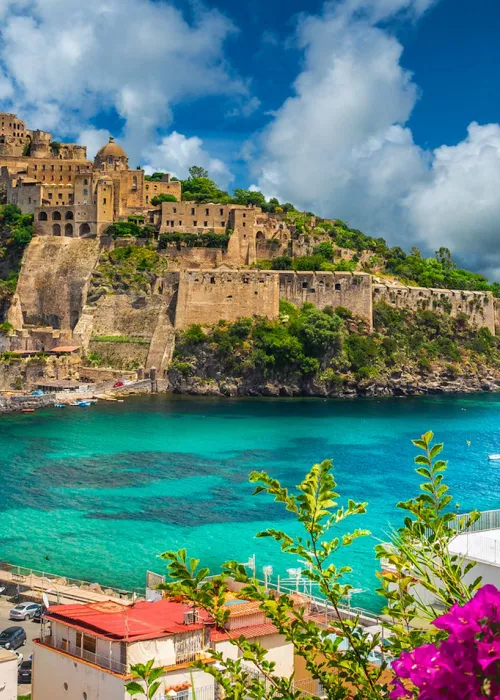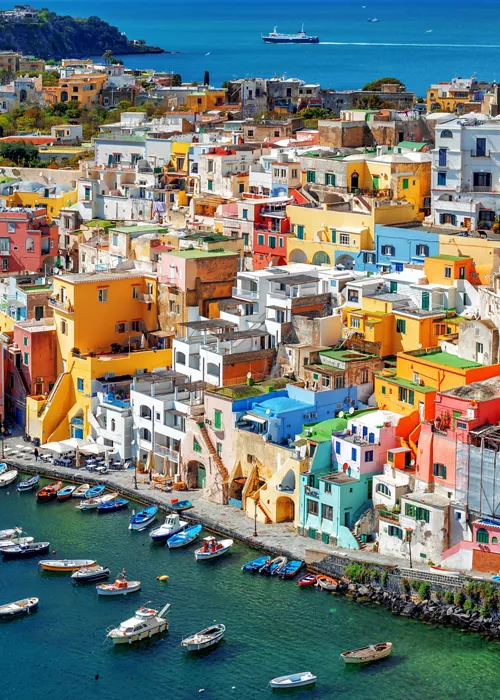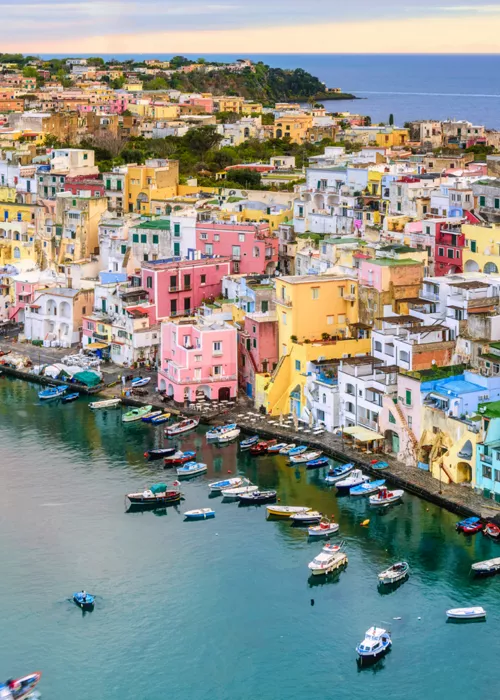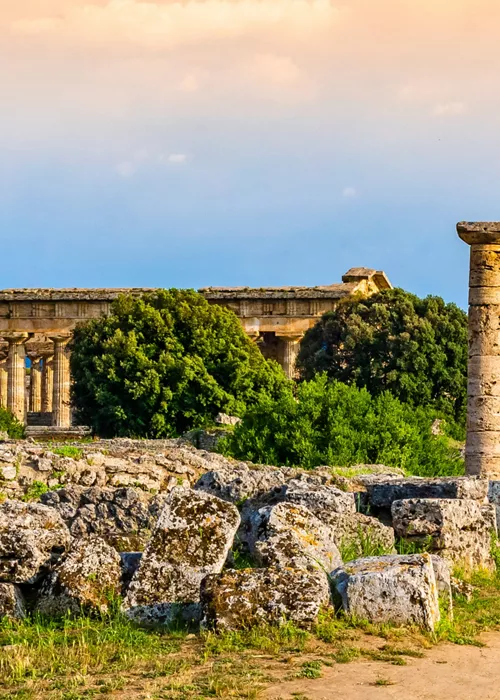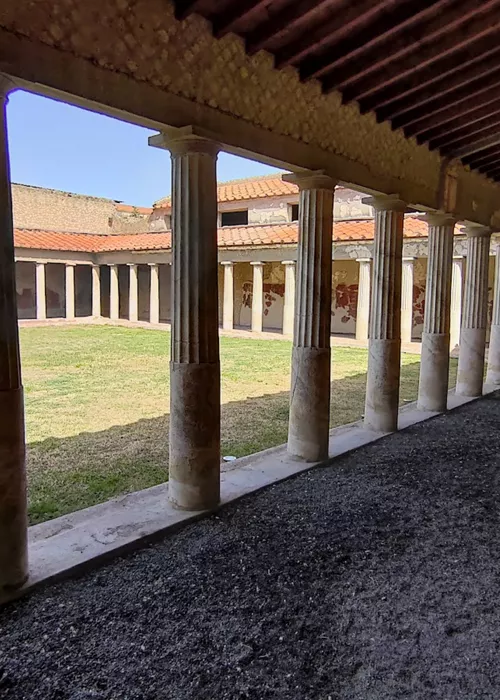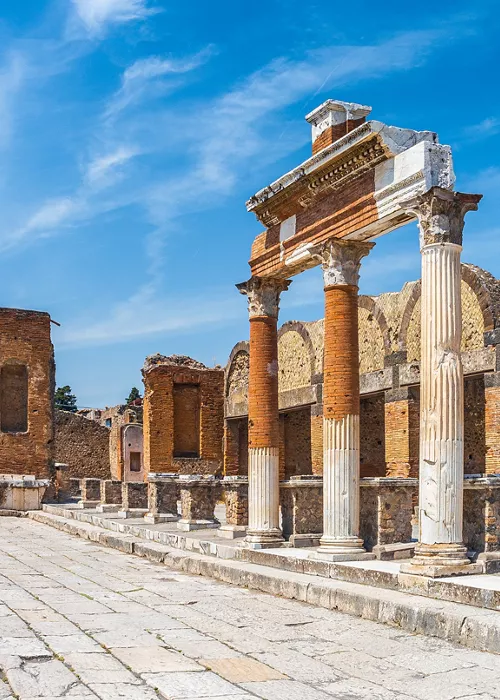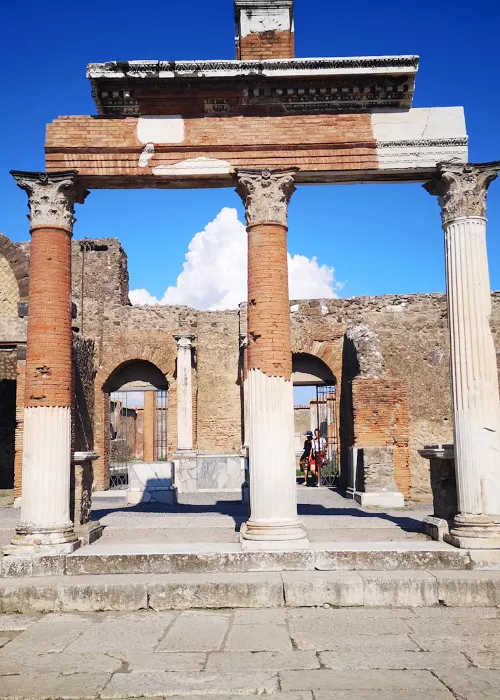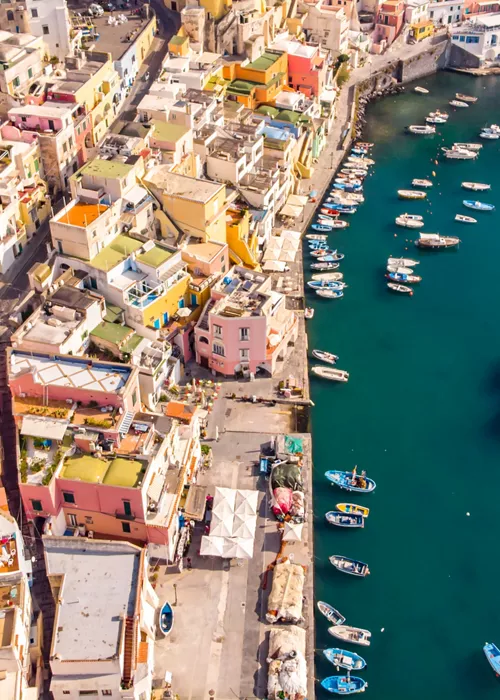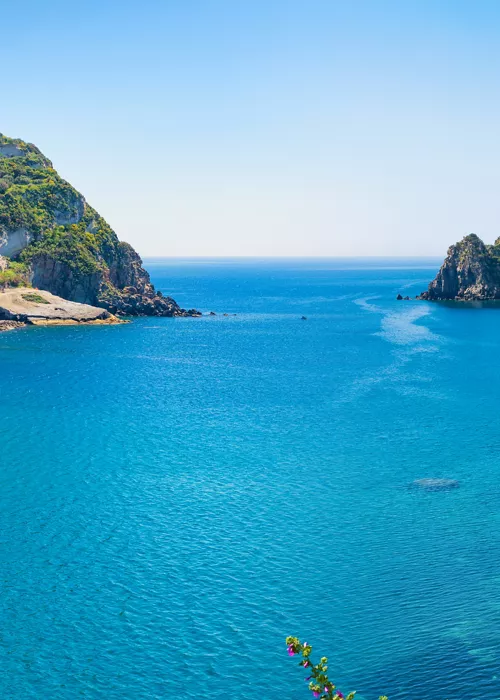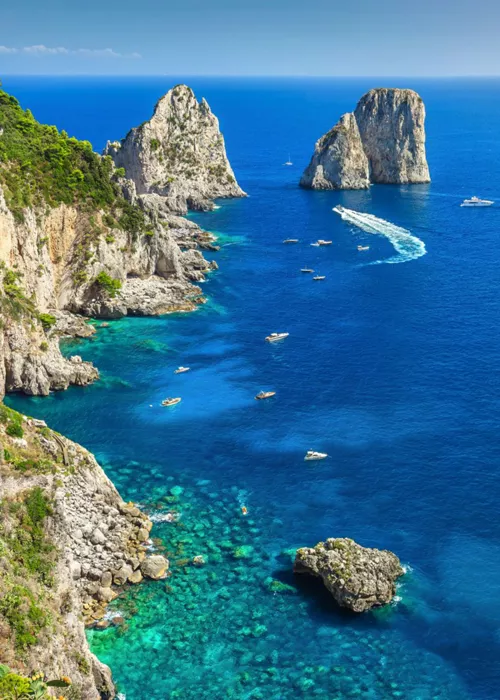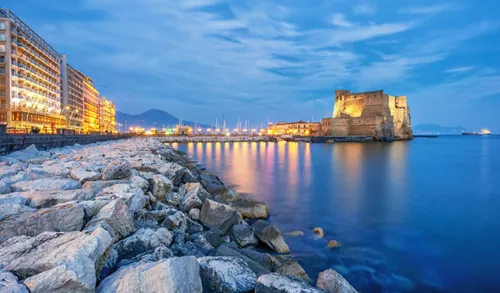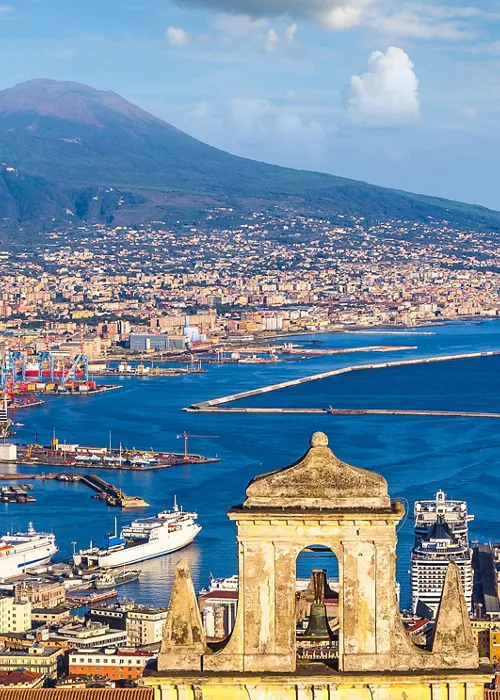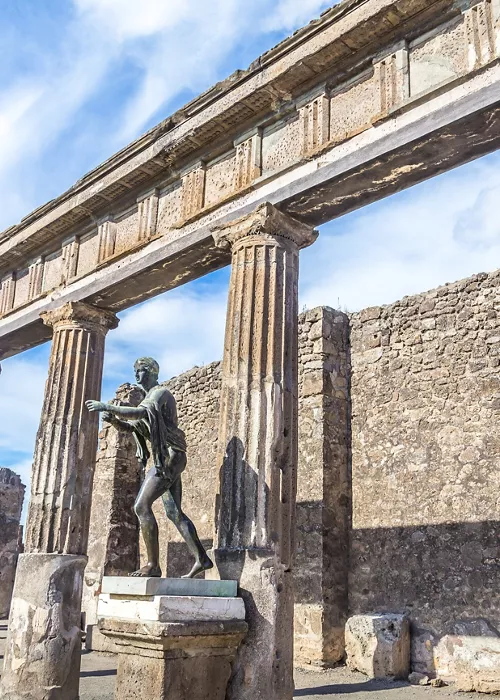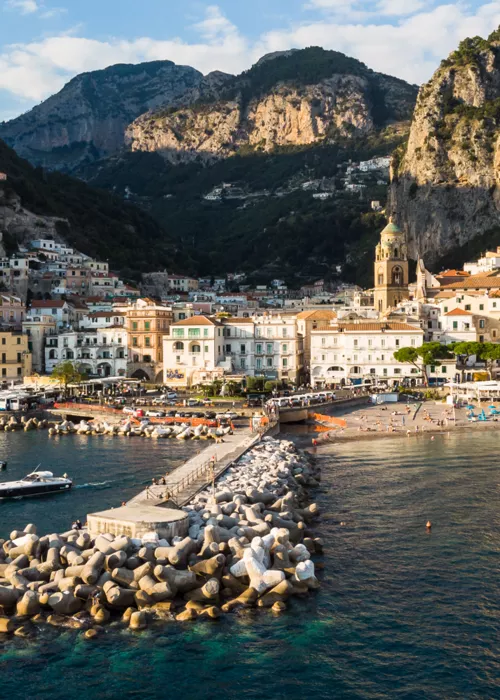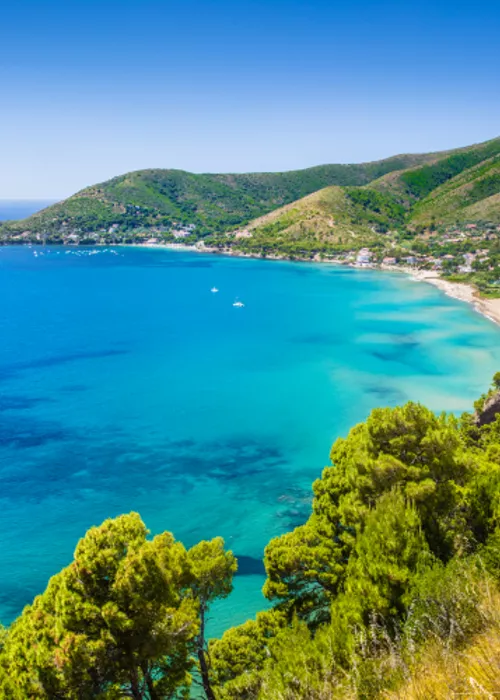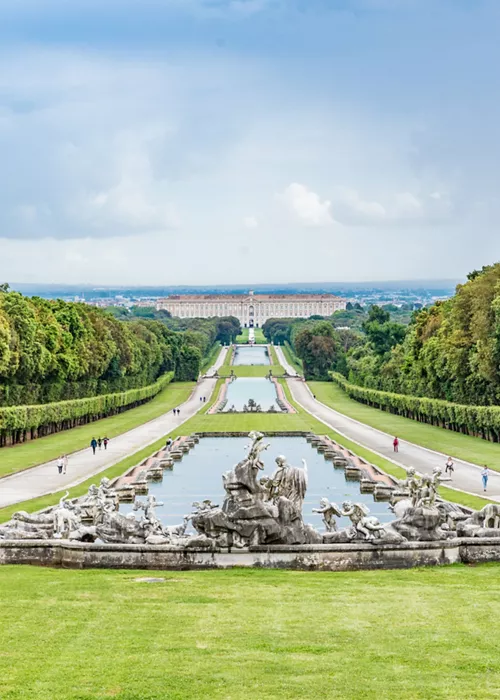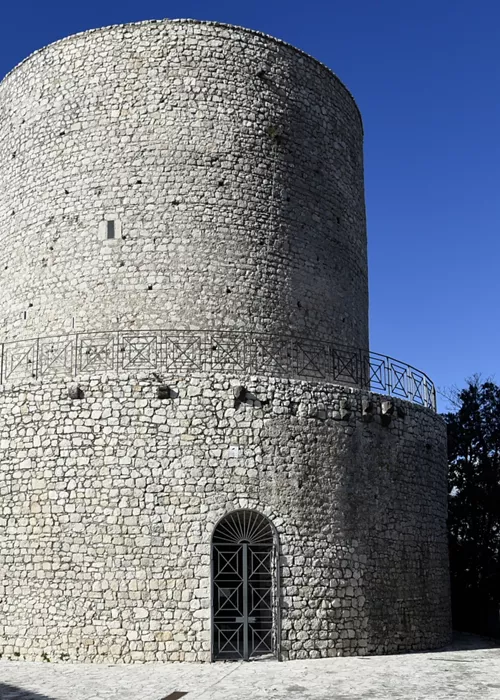Landscapes of Campania
4 minutes

Index
Whether the view from the hill of Capodimonte, from the Lungomare Caracciolo or from Capo Posillipo, which offers a spectacular panorama of Nisida, the Gulf of Pozzuoli and the Gulf of Naples, the promontory of Capo Miseno, Procida, Ischia, Capri, Vesuvius, the Sorrento Peninsula and the Hermitage of Camaldoli, Neapolitan views always captivate with their aesthetic power. As Matilde Serao wrote, 'the sea where sorrow ends is the sea of Posillipo, the glaucous sea that takes on all hues, that is adorned with all beauties. What the human brain can devise to imagine paradise, it realises'.
Vesuvius, where the force of nature expresses all its imaginative energy
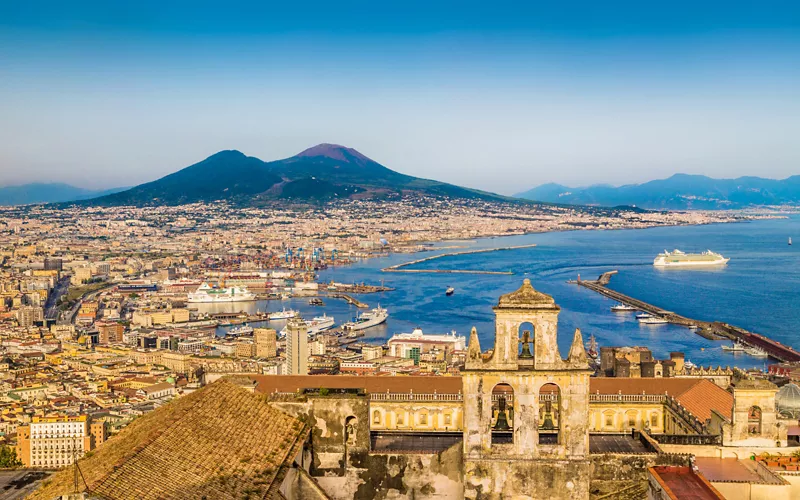
In a region among the most celebrated by travellers of all times, it is difficult to say which landscape arouses the strongest emotions. Vesuvius, with the lands surrounding it protected by the National Park of the same name, is the one that gives the clearest sensations of the power of nature, of a force so influential and constant in its various expressions (geological, but also 'human', historical and cultural) as to become a spectacular source of inspiration, pure imaginative energy. Vesuvius, a living mountain that dominates magnificent views, for its imminence, both real and symbolic, and its never-quenched threatening nature, is capable of becoming a myth, one of the most well-known landscape elements in the world. A little curiosity: from the slopes of Vesuvius comes a Disney cartoon character, Amelia the bewitching witch.
The Amalfi Coast: the beauty of a unique setting
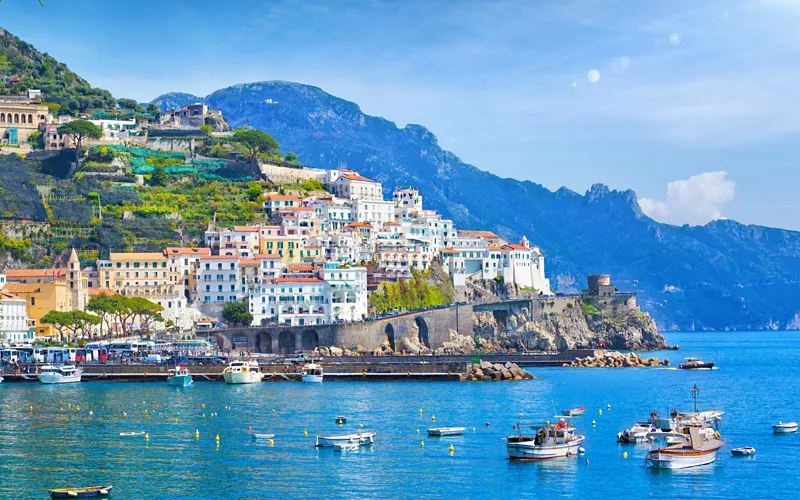
What the Amalfi Coast represents is summed up perfectly by Renato Fucini in 1878: 'The day of judgement, for the people of Amalfi who go to paradise, will be a day like any other'. For these 'paradisiacal' stretches, the Coast is one of the most frequented shores by those seeking a sea that combines environmental peculiarities, history and tradition in an absolutely scenic way: from Vietri sul Mare to Positano, 13 villages dreamt of all over the world, overlooking the sea along 37 km of coastline to be travelled to discover, curve after curve, new wonders. The fil rouge of the 'Costa Diva' is beauty: the fragrances of the Mediterranean scrub, the flavours of unique food and wine excellences (from the lemons of Minori to the anchovies of Cetara), the incredible artistic heritage that amazes at every step - such as the splendid dome covered in colourful Vietri ceramics, the murals of Furore or the historic residences of Ravello, including Villa Rufolo with that spectacular panorama that bewitched Wagner. Writers, poets, painters, film directors, actors, dancers, musicians and international jet set personalities have fallen in love with these villages, the breathtaking views, a small beach or a promontory, a unique lifestyle and atmosphere, choosing the Coast, a World Heritage Site, as their home and refuge.
Campania's islands, sirens in the sea, enveloping you in the enchantment of nature and poetry
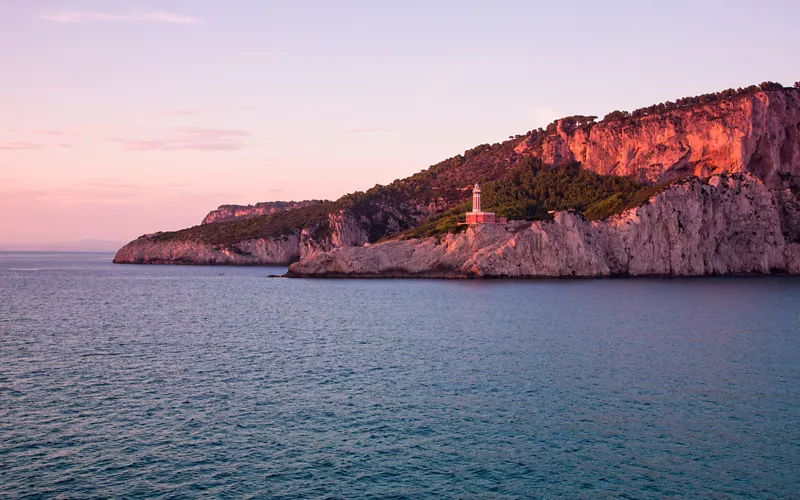
The names already evoke magnificence: Capri, Ischia, Procida, Nisida and Vivara seem to resound with the sirens' call to a wonderful world. The Campania archipelago represents a natural and human heritage among the most desired in the world for its limpid waters, inlets, sheer cliffs, and mild climate; for the thermal baths of Ischia, renowned for the quality of their waters and the extraordinary landscapes that frame the spas; for the fishermen's village of Corricella in Procida, with its characteristic colourful houses and bars 1m from the sea; for the slow pace of Vivara, where time and space seem suspended to let you experience the unspoilt nature of the reserve. More than islands, you will discover a privileged microcosm.
Thousand-year-old memories consigned to the world: the uniqueness of Pompeii and Paestum
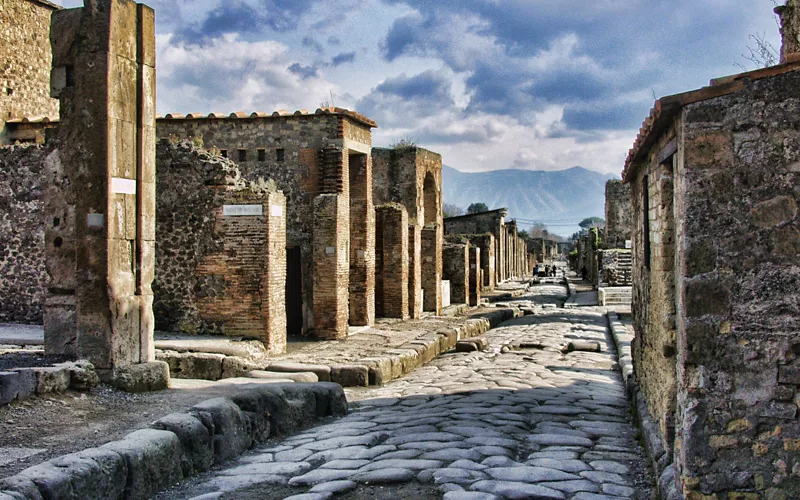
The lands of Campania amaze with incomparable treasures such as the archaeological World Heritage sites. Paestum is a rich fragment of Magna Graecia: 2 km from the sea, with its sandy beach and pine forest running along the coast, this area will leave you stunned at the sight of the majestic colonnades guarding the sacred spaces. Herculaneum was the site of one of the most important discoveries ever: excavations that would also uncover Pompeii and Oplontis began here. The City of Hercules was submerged by mud and lava that sealed the materials, leaving us with unaltered signs of an everyday life thousands of years old. Pompeii is a unique memory: 'Buried City', a place of catastrophe and emotion at the same time. The eruption of Vesuvius that buried it photographed a moment in history, restoring it to us in all its drama. No image can render with the same force the sensation of crossing time that you will experience walking through the excavations of Pompeii.
The inland lands: the unusual and surprising face of Campania
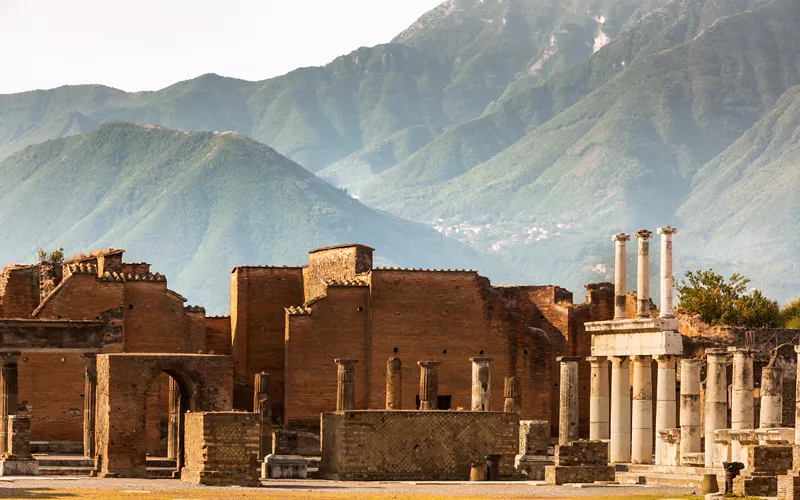
The inland lands of Campania are rough, wild. The sea is not far away, but the colours really do change, as do the villages and the lifestyle. Whether in the Benevento mountains, the Matese or the Sannio, here the places speak an unusual language, less well-known and therefore less 'taken for granted' than many coastal landscapes. The lands that rise up to form high hills, until they become mountains towards the Apennines, preserve something profoundly ancient, a hint of historical nobility and memory of the land, which can be found in the relics of millenary civilisations, in traditions, in the sharing of authentic flavours, in the faces of those who live there.

